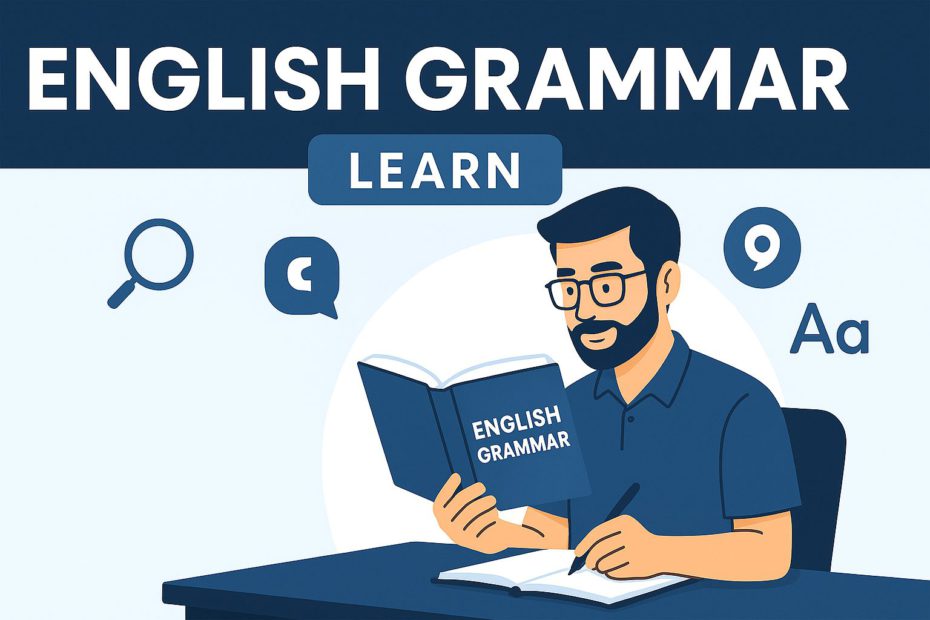English grammar is the foundation of effective communication. Whether you’re writing an essay, preparing a presentation, or having a conversation, grammar helps you organize words into meaningful sentences. In this guide, we’ll break down grammar into simple, manageable parts so you can start mastering it step by step.
🔍 What Does “Grammar” Mean?
Grammar refers to the rules and structure that guide how words are used in a language. It helps us form sentences that make sense and clearly express our thoughts. Grammar also reflects how real people use language in everyday speaking and writing—not just textbook definitions.
🧱 Levels of Grammar
English grammar can be understood across four main levels:
- Parts of Speech – The basic building blocks (like nouns and verbs)
- Phrases – Small groups of words that work together
- Clauses – Larger groups of words with subjects and verbs
- Sentences – Complete thoughts built from words, phrases, and clauses
🗂️ 1. Parts of Speech (The 8 Categories of Words)
Parts of speech are categories that describe the role a word plays in a sentence. Here are the eight essential parts of speech:
- Nouns
Words that name people, places, or things.
Examples: teacher, city, book - Verbs
Words that show actions or states.
Examples: run, think, is, build - Adjectives
Words that describe nouns.
Examples: blue, tall, expensive - Adverbs
Words that describe verbs, adjectives, or other adverbs.
Examples: quickly, very, extremely - Prepositions
Words that show relationships between other words.
Examples: in, at, on, from - Determiners
Words that come before nouns to clarify meaning.
Examples: a, an, the, this, that - Pronouns
Words that replace nouns.
Examples: he, she, they, it, we - Conjunctions
Words that connect words or parts of a sentence.
Examples: and, but, because, or - Interjections
Short exclamations that express emotion.
Examples: wow! oh! ouch!
🧾 2. Phrases
A phrase is a small group of words that work together as a unit but do not form a complete sentence. They act as single parts of speech.
Examples:
- a good friend (noun phrase)
- very tired (adjective phrase)
🔗 3. Clauses
A clause is a group of words that includes both a subject and a verb. Clauses may be:
- Independent – Can stand alone as a complete sentence.
Example: She smiled. - Dependent – Cannot stand alone and needs more information.
Example: Because it was raining
A full sentence might include both:
She smiled because it was raining.
🧠 4. Sentences
A sentence is a complete thought, typically made up of a subject and a verb. Sentences can be simple or complex and serve many purposes: statements, questions, commands, or exclamations.
Example:
The cat sat on the mat. (statement)
Where are you going? (question)
✅ Final Thoughts: Why Grammar Matters
Learning English grammar helps you write and speak with confidence. By understanding the parts of speech, how phrases and clauses work, and how to build sentences, you’ll be able to express your thoughts clearly and correctly.
Whether you’re just getting started or refining your skills, grammar is a lifelong tool that supports every aspect of language learning.
✍️ Ready to Learn More?
Stay tuned for upcoming posts where we dive deeper into each part of grammar — with examples, practice tips, and real-life usage.

